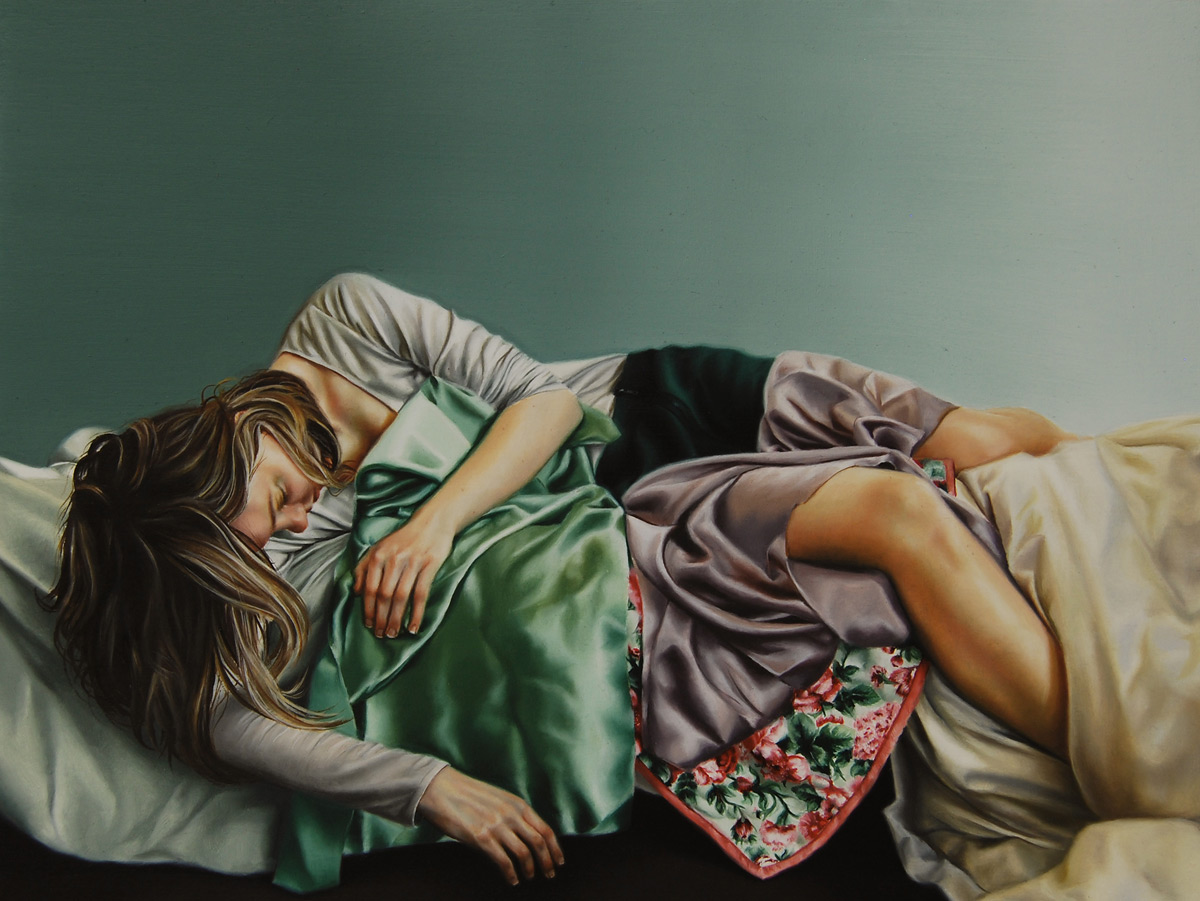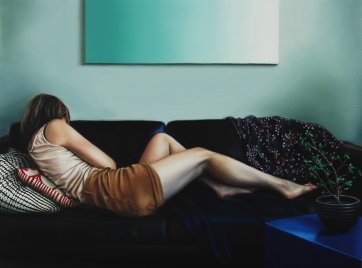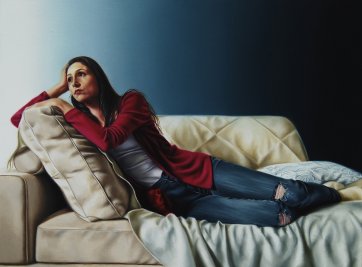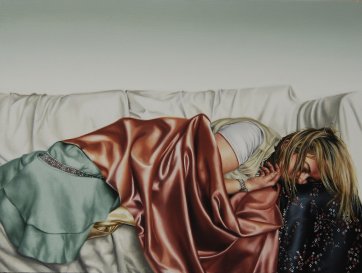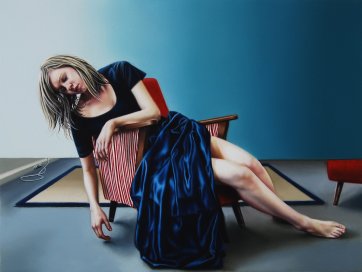‘… it is a very serious thing to have been watched. We all radiate something curiously intimate when we believe ourselves to be alone’.
E.M. Forster, Where Angels Fear to Tread, 1905
Most of Bieniek’s subjects are reclining, but none are resting – they have in the artist’s words a ‘melancholia, restlessness and uneasiness'. Bieniek works in the 16th century tradition of the European miniature portrait, mirroring the size at which we again treasure, observe or share portraits – now on handheld devices. The miniature also forces you into an intimate encounter with the work and subject. Simultaneously, the keyhole perspective forces a tense acknowledgement of the subject’s private human moment of emotion. This discomforting conflation of the private and public image is symptomatic of a contemporary unease. Though laboriously working up the layers on the tiny faces of herself and her friends ‘where one mistake can throw the whole’ Bieniek recognises human fragility when captured in moments of feeling.
